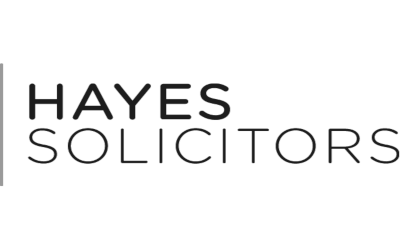The second derivative of ‘I’ in ROI – Impact
Experiential marketing, one of the many disciplines we use to garner awareness, interaction, engagement and essentially sales, has always been seen as the most ecologically damaging. One-off events and stunts were guilty of using materials and practices which generated more substance for landfills than they offset, which at times was deemed unavoidable, but “unavoidable” doesn’t cut it anymore. Those charged with marketing budgets, brands and events have a duty now to drive return on investment but not at the expense of the planet. Another derivative or factor in their calculation of ROI is the emergence of second definitive ‘I’, the ‘impact’ it has on our climate or ecosystem.
Yes, sustainability is the ‘hot topic’ right now but it’s far from a new phenomenon and the responsible agencies and brands among us have been reducing our carbon footprint for years. However, as time passed, the effects of the production of single-use plastics or burning of fossil fuels has become more apparent and more talked about in the mainstream thanks to the media coverage generated by Attenborough, Greenpeace and Thunberg amongst others. A welcome change in the collective mindset.
While this might seem detrimental to the experience economy, it’s actually a superb opportunity to stand up and be counted. There is no fence to sit on here. Research shows that 63% of global consumers prefer to purchase products and services from companies that stand for a purpose that reflects their own values and beliefs, and will avoid companies that don’t, according to Accenture Research . Whether you’re focussed on outcomes (sentiment, consideration, loyalty) or the outputs (interactions, sales), you can still achieve the same level of success without having to sacrifice on the overall experience, in fact brands who highlight their sustainability story in creating the experience can achieve a higher recall. It becomes part of your narrative as well as your production, showing you actually care sparks an emotional response thus heightening the positive sentiment and reaction. Nike has been researching and developing sustainable practices for the whole apparel industry, open sourcing it’s findings so that even its competitors can learn from its findings. By that benefit, adidas created the ‘Parlay range’ of footwear, made from plastic gathered from the oceans. Both saw a significant rise in consumer sentiment and sales. This year, Glastonbury hosted a stage made entirely out of recycled materials which was collected on pre-event organised beach cleans. Brands literally walking the walk then using it as part of the marketing narrative, positively reducing their impact without conceding on the final ROI.
As with all cultural and process change, planning is key. The first port of call here for experiential marketing is of course to research the materials used. Branded merchandise will prove the most difficult, simply because many suppliers have yet to switch on to the impact their products have on the environment. Large Asian and American conglomerates still work on old-school capitalist ideals that don’t necessarily match with sustainable practices, money over matter. We recently sat down with Dublin City Council to discuss the new policies around on-street sampling. In a hugely positive move all single-use plastics have been rightly outlawed, a move from PET to PLA materials. No more single-use ponchos, no more plastic bottles, no more disposable cutlery, no more logo emblazoned keychains or whatever you’re having yourself. The good better news is that there are countless other sustainable replacements, you just need to be creative and research your supplier capabilities. But really your product and experience should be good enough to not need a takeaway memento.
It’s also worth bearing in mind the transport methods used to create your experiences. Everything from how your builds are delivered to how your teams arrive to the destination needs to be considered. While we always do our very best to ensure Irish supply chains are used, sometimes this is not entirely possible, so you’ll need to factor in a longer lead time. Teams are strongly advised to use buses, trains, bicycles or walk to their event location, but for harder to access destinations are requested to use shared transport with allowances made in their remuneration.
Lastly, you must stop short-sighted planning and look at longer term outputs and outcomes from your experience or events. Can your build or experience be reskinned or reused further down the line in a revised or separate campaign? Plan to have evergreen props or structures that can be reinvigorated with a new ‘lick of paint’, setting or application. With this there may be an added cost for storage, but savings in the long term provided you reuse an adequate or effective amount of times.
Put simply, the production and execution of your experiences with a sustainability ethos doesn’t need to evoke any fear or stress. With smart planning, proactive research and striving for a carbon neutral output, you will achieve greater success outright. You can sleep easy knowing your ROInvestment and your ROImpact are treated with equal importance, and not adversely related.
– Gavin Coffey is Global Digital Director in Honey+Buzz, the creative brand experiences agency.
The Human Touch
I met the nicest couple in a waiting room a few years ago. I knew the man from somewhere but couldn’t place him. I assumed that he was a friend of my parents, or I had met him through work. We had a delightful conversation about family, retirement and life in general. He had a warm and generous smile. He put both my son and me at ease as he saw that we were both apprehensive about going in for a scan. A father who had probably been there before, with his own child. Some people that we meet make a connection with us, and I felt better for the encounter.
A few days later, trying to work out who he was, I discovered that the man wasn’t a family friend at all, but none other than the now late Feargal Quinn. I suppose well known people get that a lot when people think that they know them from somewhere. It was a measure of the man the way that he made us feel, but I got the impression that this was his way with everybody he met.
Further research led me to dig out a textbook he had written that was part of our business studies curriculum in secondary school. ‘Crowning the Customer’ was a book that struck a chord with me as a school-boy, in its very straight forward and pragmatic approach to business. His main contention is that if you keep the customer happy and have their concerns at the heart of your strategy, they will keep coming back. It is something that shone through with his staff, as they were the living and breathing epitome of what Superquinn were trying to achieve. I will always remember the staff who packed my parents’ bags and brought them out to their car in the rain, all with a smile on their face. That was the Superquinn way.
We can all learn from this. These are the easy wins for those who work in retail, hospitality and furthermore in field marketing, promotions and events. We depend on the staff that we hire to represent us, as they are the last interface between the brand and the consumer. Its probably stating the obvious, but we need to strive to achieve excellence in how a product or service is presented. This comes through the recruitment of the right staff, motivating them correctly and making sure that they are trained and briefed effectively so that they can give the customer the most positive experience possible. This gives you the opportunity to sample the perfect serve of London Essence in Tesco, or provide that memorable sales pitch at the Volvo pop up store that converts into a sales lead for your client. Again, this isn’t rocket science but its important that the chemistry between the staff member and the brand is just right.
Monitoring is also a vital point to ensure that your field team feel supported but also that they know that you have skin in the game too. No-one wants a moany Michael or a scorpy Simon representing their brand or indeed their agency! I’d go a step further to say that it’s important for all the client service team to get out there to live and breathe the event itself. This goes for everyone from account executive to managing director.
One of the most positive customer experiences I’ve had in recent times, was at a restaurant in Blanchardstown. My brother and his wife had a toddler with them, and as the main course came, the manager came over and took my nephew off for a wander to explore the restaurant, giving a welcome break to Mum and Dad, and a chance to enjoy the food. This didn’t cost the restaurant anything, but probably gained them 15 new customers as the story went pinging around the various WhatsApp groups.
So, before the Promo Robots take over (you can hire a Boris, Norris, Doris and Morris for all your event needs across the UK!) we can take a leaf out of the Superquinn book of Crowning the Customer. In a world where there is an ever-increasing push towards automation and taking people out of customer service, there are huge opportunities for the human touch to win over new consumers and customers for our clients.
Neil Devlin
Director and Owner at Mixtape Marketing
IF YOU LOVE THEM, LET THEM GO…AND THEN GIVE THEM A REASON TO COME BACK
We live in an age of more and more choice and, increasingly, an expectation that shopping around is the smart move.
Consumers who “always use Persil”, or shoppers who “only ever shop in Tesco”, or customers who have “been with the same insurance company for decades” are increasingly rare. Shopping around between mobile phone providers, or between oil & gas suppliers, or between airlines is often seen as the best way to secure deals.
This freedom to change, or move, or switch is seen as a right – indeed an aspiration – by some consumers. Many subscription services and gym memberships have already recognised that their customers expect to be able to come and go, drop in and drop out at will and don’t want to be tied to a contract. Similarly, the consumer “base” of many brands is far from static but is a constantly shifting tide of existing, new and returning customers.
So rather than trying to lock them in, or tie them down, perhaps it is time to ensure your target audience is choosing you because they want to, when they want to. And this is where promotional marketing comes into its own. Familiar added value promotions, prize-based rewards, and experiential marketing can help you ensure that your brand has the welcome mat out and the kettle on at regular intervals throughout the year. Especially if the promotional offering is one that is known and loved by your target audience and they know exactly what they are coming back for.
One brand that has successfully built promotional marketing into its global strategy for at least 2 decades is Clinique with its famous Bonus Time. Working on a repeating calendar cycle, key retailers are allocated exclusive promotional windows rewarding purchasers of any two products with an attractive Bonus Gift. Typically, the Bonus features new products to encourage cross-range trial, while the Bonus Time rewards larger stockists with an exclusive promotion that increases footfall and sales. Crucially, Clinique doesn’t have to re-invent the wheel every time – the core collateral and promotional approach is consistent, making it efficient for their marketing team to implement and roll out. But more importantly, it is understood, recognised and appreciated by new and returning customers who actively seek out the Bonus Time promotional periods and respond to its call several times a year, bringing them back to the brand time and again.
McDonald’s annual Monopoly promotion is another example of a promotional activation which has become part of the brand’s offering. The campaign is eagerly anticipated by McDonald’s fans everywhere, but successfully reinventing it every year has ensured it feels fresh and relevant every time.
The current “Peely Peely” campaign has cleverly built on the FOMO generation, tapping into the innate truth that people don’t want to miss out on what their friends are doing and on what everyone else seems to know about – in this case that the Monopoly game is back at McDonald’s and that a simple peel of the sticker can win you prizes.
There’s nothing new or especially clever about an instant win promotion, but it is McDonald’s consistent promotional strategy that provides consumers with an engaging and entertaining hook to remind them why they love this brand, that keeps them coming back.
And of course, Easter wouldn’t be Easter without the annual Crème Egg promotional activation from Cadbury. The current Crème Egg Hunt campaign has expanded the hunt for the white Crème Egg across channels and platforms. Amplified by social media and a significant advertising spend on both terrestrial and digital platforms, this campaign continues to capture the imagination of Crème Egg lovers year after year. But it is the way the brand has reinforced success by deploying a consistent promotional marketing strategy that has elevated this promotional campaign above others.
Their commitment to consistent promotional marketing even meant that as last year’s campaign ended, they announced the Hunting Season was over and signed off with “see you next year” demonstrating a brand with the confidence to say goodbye, but providing the reassurance to the consumer that this brand will be waiting for them.
So perhaps these examples demonstrate that promotional campaigns which can provide genuine value and engagement, and are consistent with your brand and optimised across all your consumer touchpoints, may be just what is needed to keep new and returning customers coming back to your brand time and time again. And perhaps having the confidence to let some of your consumers go, some of the time, should be seen as less of a threat and a weakness and more of a strength and an opportunity for your brand.
SARA CALLANAN Is Managing Director of Elevator Promotional Marketing
www.elevatorpromotions.com
Elevator Promotional Marketing is NI’s only specialist promotional agency, delivering effective marketing campaigns for brands and businesses including Tayto NI, Irwin’s, Dale Farm, Coca-Cola, Translink, Danske Bank, Boost Energy, Mackle Petfoods and Tennent’s NI.
The gravitational pull of integration
Jimmy Murphy, Director at Publicis Dublin
I was out for dinner with a senior client from one of the country’s biggest advertisers the other night. Not a client of mine I might add so felt safe in ‘hopping the ball’ on something I’ve been thinking about recently. I asked her, ‘how would you feel if your creative agency hired a media director?’. I expected an open mind (she’s a progressive client) but I didn’t expect the response I got. To say she welcomed the idea is an understatement. She took it and ran with it, imagining the pleasure of dealing with one strategic source, the benefits of a short communications chain, the cost efficiencies, the daydream went on.
Now I’m not suggesting that media and creative agencies are about to embark on a wave of re-integration but what I have observed, in both our world in any market, if the consumer wants something, there is gravitational force exerted and eventually suppliers will fall in line.
This gravitational pull has already seen a raft of integration between digital, above the line and below the line disciplines in creative shops. The agencies with separate P&Ls for separate disciplines have struggled to appear media neutral and this can be a source of frustration for the clients I speak to.
Digital, and particularly social, has meant that the lines between advertising, PR and activation have been blurred. We now have PR people working in ad agencies and PR agencies making what would once have been classed as advertising. Calling the output ‘film’ or ‘content’ smooths some feathers but if it walks like a duck, and quacks like a duck…..
The need for integration has been amplified by digital. Powerful as it is, it’s hard to get away from the fact that it’s complicated as hell to serve multivariate copy into programmatic campaigns and monitor the results in real time. We make out like it’s a seamless, automated process but in reality there’s a little too much human input required; and this means balls will get dropped.
For me, this is an inefficient market. Inefficient markets attract ambitious competition. When the rules change and a market is slow to react, new entrants can exploit the gaps. In our industry, these new entrants are the consultants. They are masters of adapting their offerings to match the needs of clients. They will emphasise the need for design oriented, born-in-digital communications strategies that integrate with the clients own internal systems. They preach the gospel of true integration and they have brands that clients trust (and can sell upstairs). Creative agencies will say ‘yeah, but do they have a creative culture?’. The answer is often ‘no, but they can buy one!’. Witness Accenture’s purchase of Karmarama. A consulting blue-blood paying eye-watering multiples for a creative middle-weight. As Scott Galloway memorably yelled from the stage of the Lumiere Theatre in Cannes this year, “Wake up people, they’re on your F**king Beaches”
So. What to do. Double down on creativity and wait for the Accenture chequebook to come knocking? Could be a plan if you’re an independent agency but it strikes me that the gravitational pull could topple you before pay-day. Or do we beat them at their own game; give up the petty turf wars, fully integrate all of our current disciplines and deepen our expertise in digital transformation. Are clients in a place where they’re willing to hand over a business critical digital transformation to an ‘advertising agency’?
I don’t have the answer. I’ll defend either strategy of you want to debate it. I just enjoy a good row.
I don’t understand the first thing about physics. People who do have explained to me definitive it is. There is no debating with a black hole. You either find a way to deal with it, or you will disappear.
Live long and prosper.
Prize Promotions: The Gift That Keeps On Giving
Chris Pearson, Account Director, Element
Prize promotions are as old as the hills. From cereal-box toys to Caribbean holidays, the idea of driving sales and engagement through prizes and rewards has been around for decades. But, for brands and agencies in 2018, the opportunities offered by prizes and incentives are truly greater than ever before…
While competitions are a regular component of annual marketing budgets for many FMCG brands, they have traditionally been a ‘bridesmaid’, playing a supporting role to above-the-line advertising campaigns. From social media giveaways to retailer overlays, prize-led activations reliably drive sales, engagement and loyalty among key target markets without necessarily being a core focus in themselves.
But that may be changing. From Coca-Cola’s ‘Win a Dream Holiday’ to Cadbury’s ‘Match and Win’ and ‘Cadbury FC’ campaigns, prize promotions are stepping out of the shadows and taking centre stage. Often supported by considerable above-the-line marketing spend, many brands are realising the power of prizes to engage consumers and, more importantly, to make bold statements about who they are.
The profile of such promotions is further multiplied by greater press coverage and, increasingly, by greater levels of attention on social media. Brands and agencies are rightly fearful of the backlash which can erupt on Facebook and Twitter when competitions are badly managed, but this is just one side of the coin. An innovative, original competition with aspirational prizes and an engaging entry mechanic can be great social content: fun, shareable and aesthetically attractive.
Spreading the word
While some of this sharing will be organic and spontaneous, there are also ways to maximise the social reach generated by prize promotions. Whether competitions are run on social media or dedicated microsites, you can prompt consumers to share entries on their social feeds, driving further traffic and engagement from their peers.
The entry mechanic is vital. Asking consumers to enter via a Facebook ‘like’, or by inputting their email on a microsite, has an appealing simplicity which will drive high entry rates. But asking people to tag an Instagram photo or upload a video can be much more valuable, in terms of interesting personalised content. Entry rates may be lower, but there’s the potential for your message to be shared and spread more widely.
Crucially, however, the prize needs to be right. Whether it’s an on-trend destination, a hot ticket event, a unique activity, or even a bundle of designer goods, the prize needs to fit the brand’s target audience. It needs to have the cultural cachet – by virtue of being fashionable or aspirational – to make people want to associate with it. If a person’s social media profile is the face they present to the world, your prize needs to fit with that face. As well as being something your target market wants, it must also be something they are happy being seen to want.
Creating content
One failsafe way to pass this test is by putting choice in the hands of the consumer. From Nutella and Kleenex to Budweiser and Glenfiddich, we’ve worked on a range of promotions where winners have designed their own prizes. Ask entrants to describe their perfect day/weekend/holiday/birthday – in words, pictures or video – and reward the winner by turning their entry into a reality.
The entries invariably make for fascinating reading. From touching stories of human kindness to hilariously bizarre descriptions of the perfect holiday, a gallery of entries constitutes superbly entertaining content. The bespoke prizes we’ve organised for these promotions range from month-long American road trips and Icelandic whale watching holidays to school trips, village fetes and even a wedding!
For winning entries, the potential for social activity is huge. Having selected an engaging story to bring to life, a brand can use social media to document the whole prize experience. From winners’ reactions through to trip preparations, and finally the experience itself, why not harness the power of Facebook and Instagram to maximise your reach? Written testimonials and photographs are great. If you can include a GoPro, and encourage winners to film a fun video diary, that’s even better.
If you’re offering a prize with real novelty or entertainment value, it might even be worth enlisting a professional camera crew. Whether it’s a celebrity meet-and-greet, an adrenaline-fuelled holiday or a wacky road trip, a promotional video can pay for itself. We’re talking about genuine, unscripted footage of a delighted customer interacting with your brand, while enjoying the experience of a lifetime. What better brand advertisement could there be?
All of this can be summed up in three words: make it count. Whether it’s a limited edition product or a once-in-a-lifetime experience, a great prize promotion gives lucky customers something amazing, something to cherish and remember. So shout about it.
Chris Pearson is an Account Director at specialist prize and incentive agency Element. With over 30 years’ experience, Element deliver travel prizes, incentives, winner management and fulfilment to a range of global clients, including brands, agencies, film distributors and media partners.
This time, it’s personal!
Zoe Behan, Account Manager, Runway Marketing
Where does our need for acknowledgement start? The assigned coat space in preschool? The morning Starbucks coffee cup? Your first business card? Let’s face it, we all like to see our name in lights! But what is personalisation?
“Sometimes known as customization, it consists of tailoring a service or a product to accommodate specific individuals, sometimes tied to groups or segments of individuals”.
I like to think of it as a brand’s opportunity to get intimate with customers, to connect with them, be taken home and the following day be talked about amongst friends. This relationship will be all the customer can think about next time (s)he walks down the shopping aisle.
The principles of personalisation have been around for a while, however brands need to think further than just personalising an email out to their database. In order for brands to grow, they need to create up close and personal customer experiences. Doing so will not only build advocacy and loyalty, it will create an emotional bond between them and their customers, like no other.
The age of the consumer is well and truly upon us. Consumers are in the driver’s seat (whether we like it or not) and with the increase of competition, brands are fighting to provide the best and most engaging experiences.
Consumers expect more, they want to feel valued and don’t want to be “just another number”. It needs to be personal in order to drive conversions and increase loyalty. Brands need to offer a tailored approach to each individual where possible and build a long-term relationship, making them far less likely to switch to rival brands.
One such brand that achieved just this, was Galaxy. As main sponsors of last years DFF (Dublin Fashion Festival), Galaxy sent out personalised bars to fashionistas and bloggers alike. At the event, Galaxy combined personalisation with sampling to deliver a ‘brand to hand’ experience that surpassed all expectations. Galaxy knew who had RSVP’d and was due to attend the event. They wanted to give a little personalised gift to everyone on the night – a bar with their name on it!
It went down a treat with the experience being amplified through social sharing – the power of personalisation at its best. Galaxy’s willingness to bend their brand guidelines helped deliver this remarkable and memorable experience.
Brands need to gain a holistic view of their customers that will enable them to deliver even more personalised and tailored marketing interactions that increase brand engagement and drive sales.
With the constant evolution of Digital Marketing, it has become even easier for brands to engage and offer their consumers something a little more personal, based on their interests, location, demographic and purchase history, making a brand feel relevant and interesting.
Take Nutella for example. Another brand that placed personalisation at the forefront of their offering through their personalised jar campaign. Not only were consumers able to create and purchase their jars in store, they also offered this through online channels, allowing consumers to create their own personalised label, before being able to purchase and have it delivered!
Through the use of social media platforms such as Facebook, Twitter and Instagram, this campaign sets the standard for synergy between offline and online whilst still offering that little personalised touch.
It may not be possible to personalise every communication, however it’s still possible to make it relevant through the use of pertinent imagery that’s appealing to the target audience, colours used, tone of voice, and font size. It sounds simple but makes a huge difference.
Time and time again, the results are clear. Brands that add in a little touch of personalisation receive greater success.
A few things to remember:
- Use your database: If you have a customer database, don’t be afraid to use it, once you have permission. Look at ways to programme this data into a personalised platform at every touch point, from greeting through to sale.
- Don’t forget about the human touch. Don’t use your data to merely split your audience into groups. Strive to deliver individual personal experiences where possible, not segmentation.
- Keep the end Consumer in mind. Ask questions like: Will they appreciate the approach and platform used? Will they feel emotionally connected? Will it stand out from the competitor? And most importantly, will it take the brands relationship to the next level with the consumer.
- Keep it personal and share it socially! If a bond has been made and the relationship has blossomed, invite your customers to share the experience with others. You may not even have to ask!














